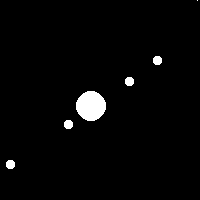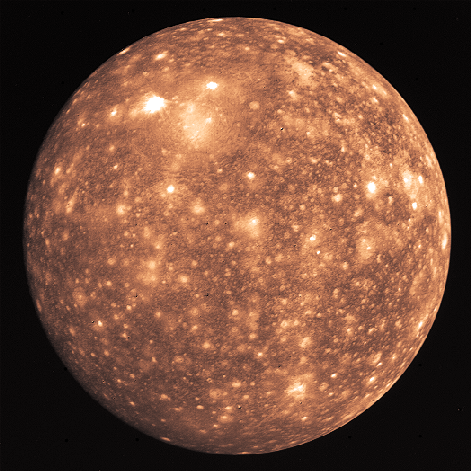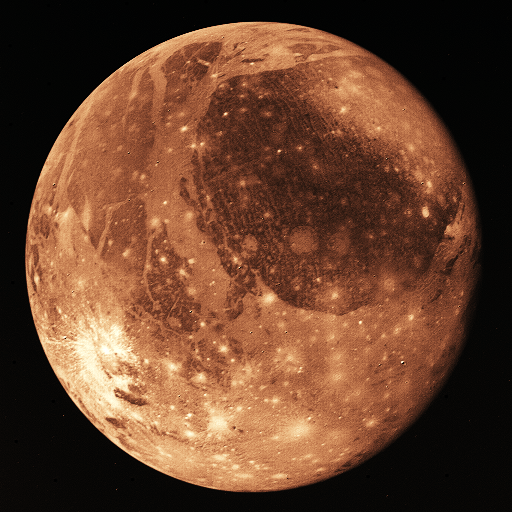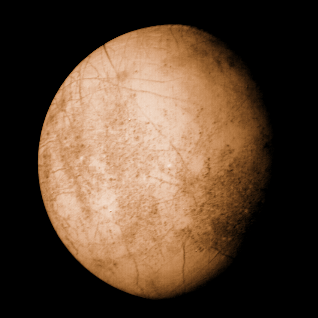
They are like a little solar system:
The densities decrease as we go out. Just like the general trend for the solar system. Presumably when Jupiter was forming, there was a disk around it and it was hotter near the center. That way, ice was lacking near the center. So we get rock for Io, rock with some H2O for Europa, a H2O and rock mixture for Ganymede and Callisto.

From its density, we surmise that it is water mixed with rock, say about 50%/50%.
From the picture, we see that the surface has lots of craters.
That indicates that the surface is not geologically active.
Note that some of the craters are light colored. That indicates fresh ice. Most of the surface has had time to be covered with darker rocky dust.
Note also that there are not high craters like on our moon: ice is not as strong as rock.
This is Valhalla, a large impact crater on Callisto. It looks like something big hit.

From its density, we surmise that it is water mixed with rock, say about 50%/50%, as with Callisto.
From the picture, we see that the surface has fewer craters. That suggests an active surface.
There are some very bright features where there is an impact crater with fresh ice. Here is a crater up close. Then there are some dark areas which have presumably been covered with darker rocky dust. Here is a dark area up close. Note that the craters appear to slowly disappear as gravity deforms the ice. Then there are some medium light areas. Presumably sometime after the dark surface was formed, water flowed here and froze. In a closeup view we see parallel ridges and troughs. Thus the light areas would be analogous to the maria of the moon, except water acts as the lava.

Europa's density of 2900 kg/m3 suggests a rocky core. But its surface appears to be ice.
Note that there are almost no craters. That means that the surface is active. The simplest model is that it is ice over a liquid water ocean.
The water might be kept warm enough to be liquid by tidal heating. (Europa always keeps the same face towards Jupiter, but tidal effects distort it sometimes more, sometimes less as Europa gets closer to Jupiter, then farther away.) Well,... there are a few craters. Here is crater Pwyll. Its walls are not as steep as the walls of craters in rock on Earth's moon; one may imagine that the ice is flowing back to being level.
Here is an image of Europa's surface that suggests ice with cracks in it with the cracks filled with frozen dirty water.
There are lots of ridges in the surface of the ice on Europa. Evidently the ridges formed at different times. (The older ridge is about 2 km across.) It appears that the surface is constantly moving.
Here is a picture that suggests rafts of ice that have moved around quite a lot. (The light blue areas appear to have been blanketed by ice ejected by the impact that produced crater Pwyll. NASA enhanced the colors for visibility. The area shown is approximately 70 km by 30 km.)